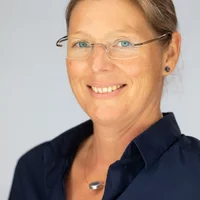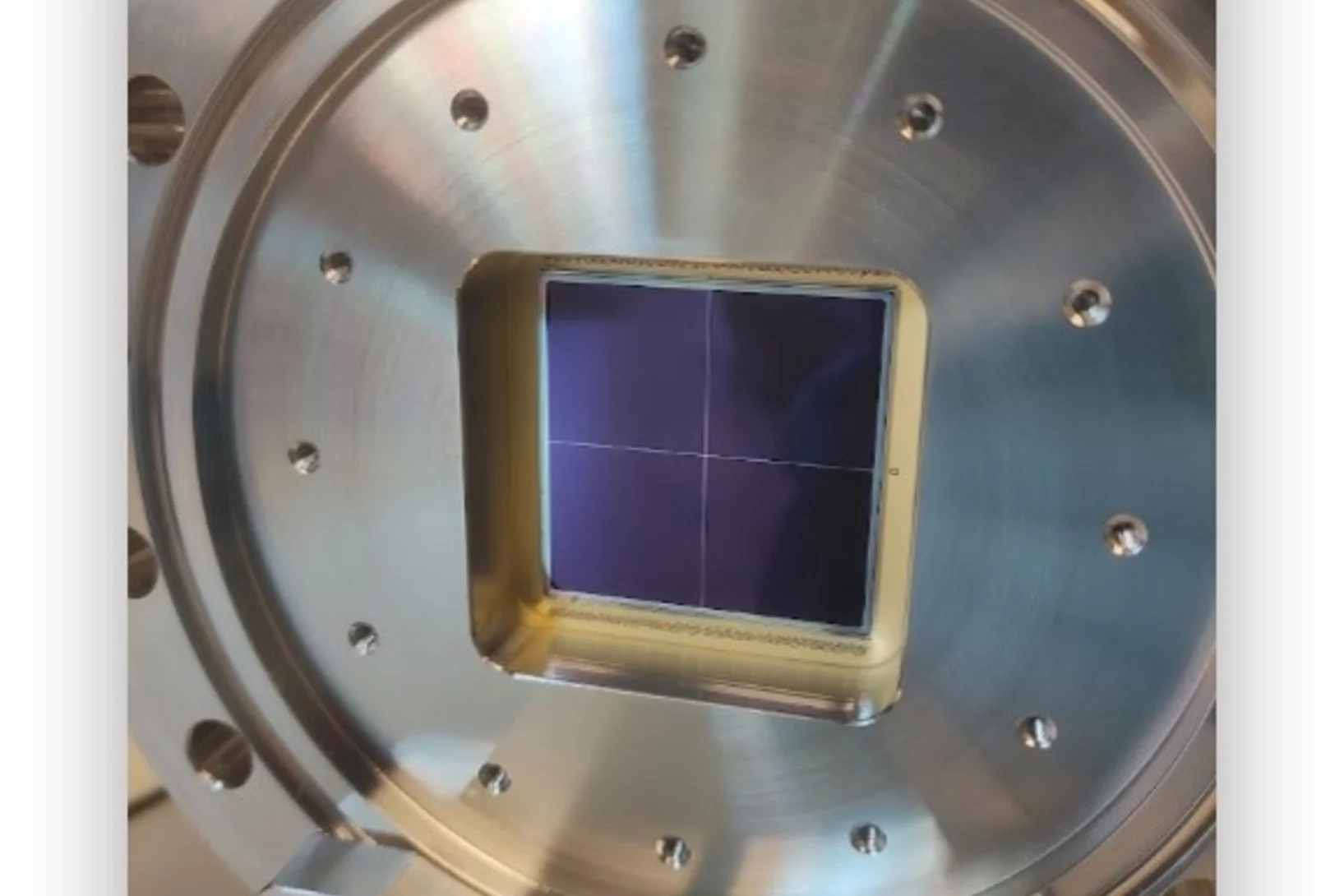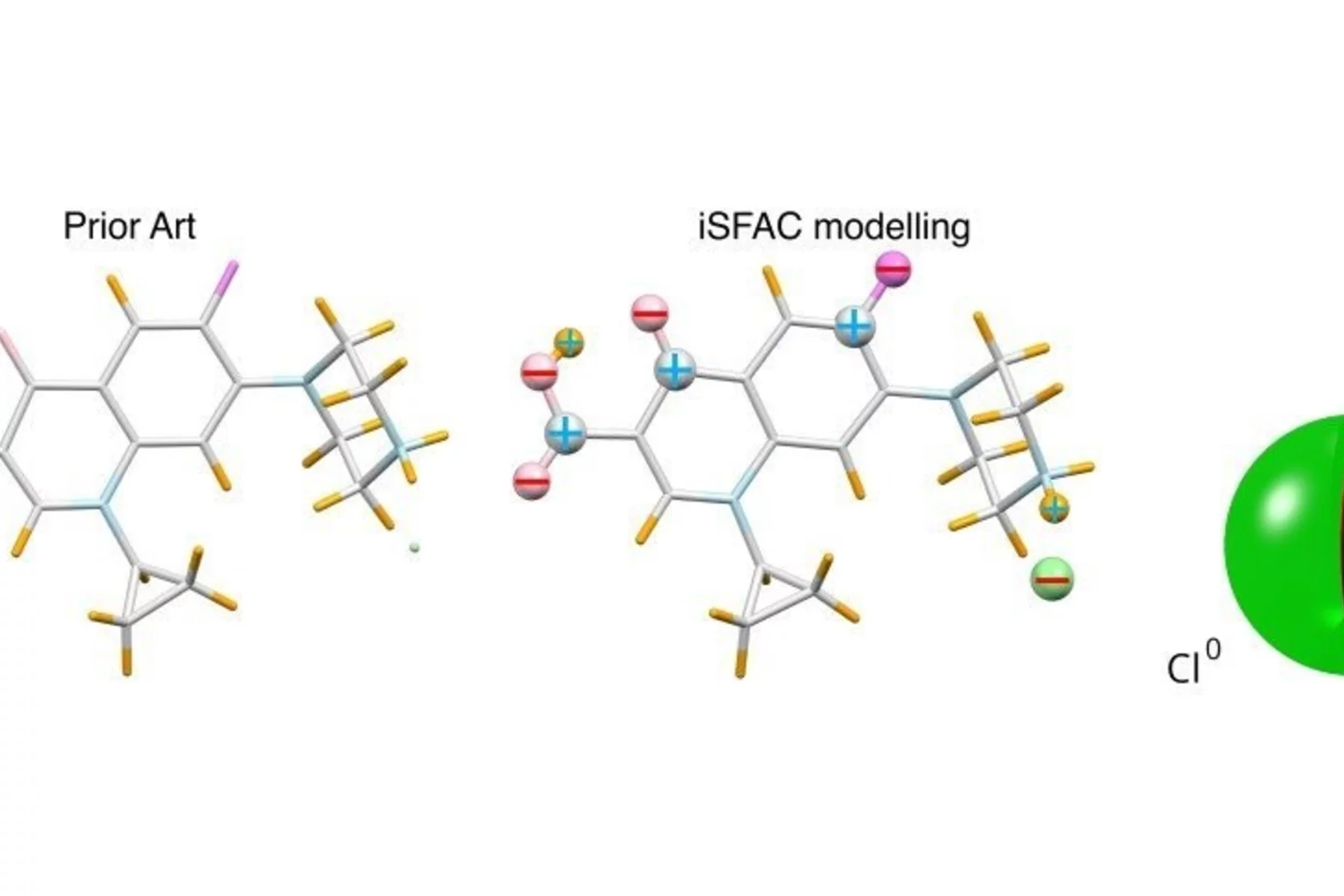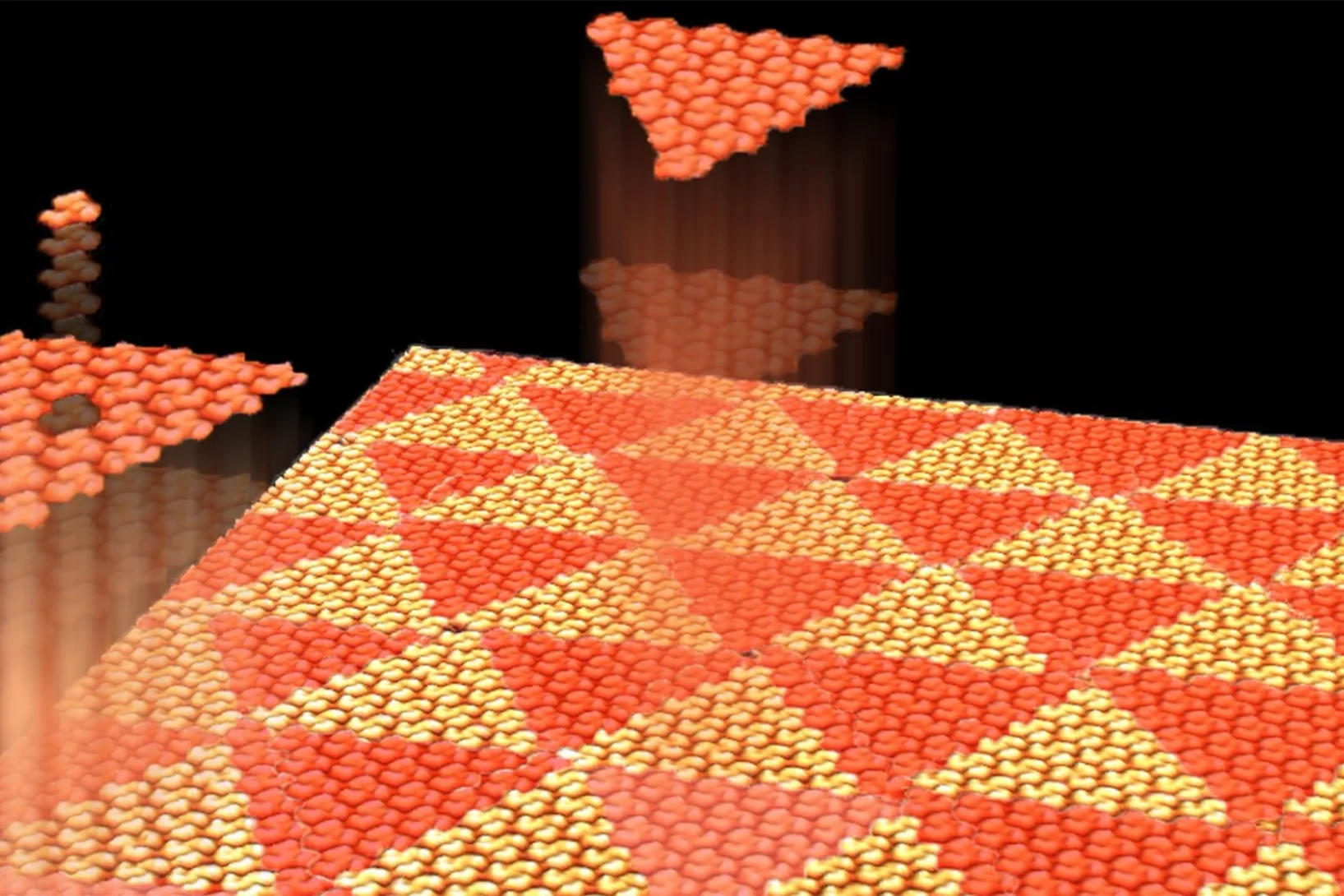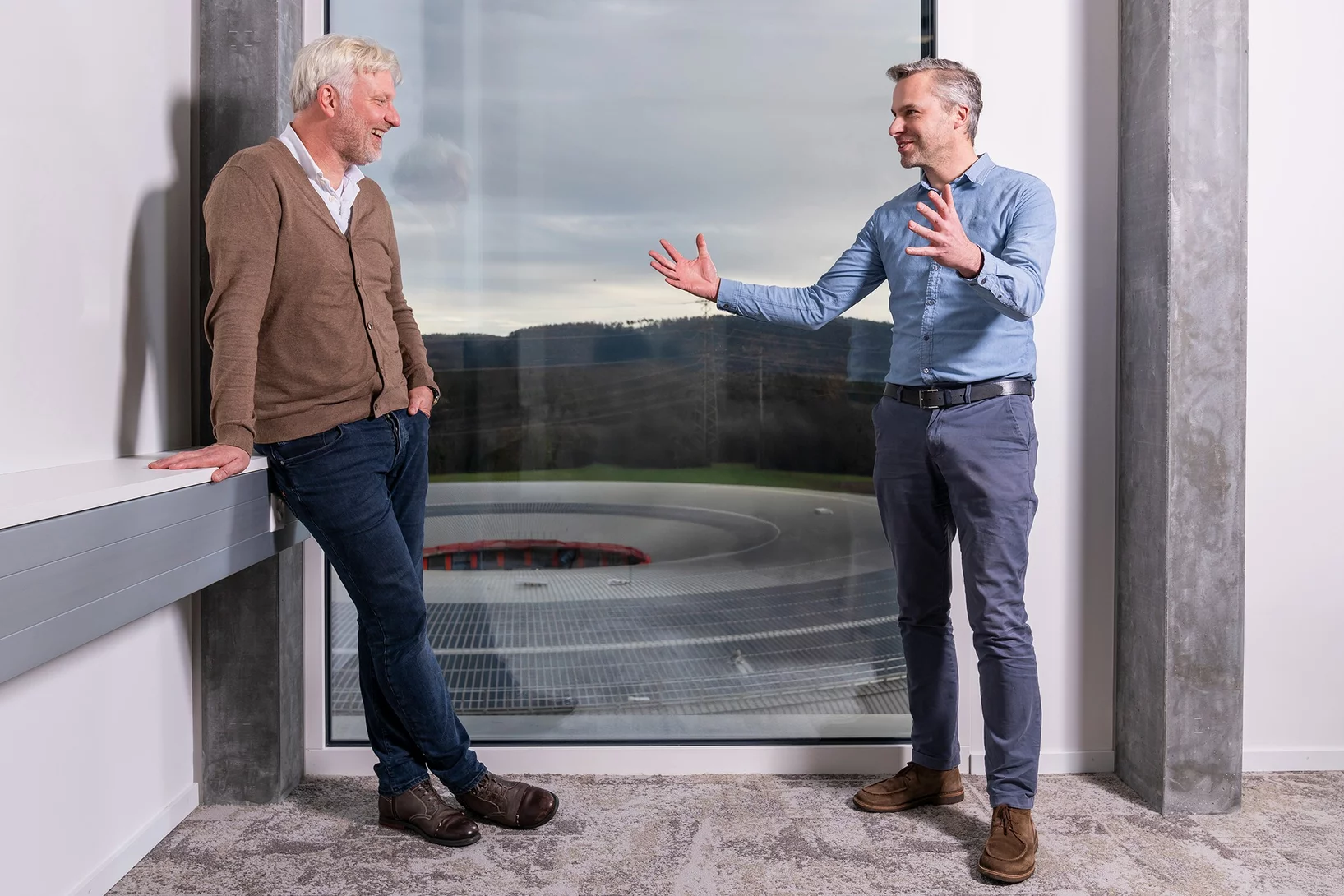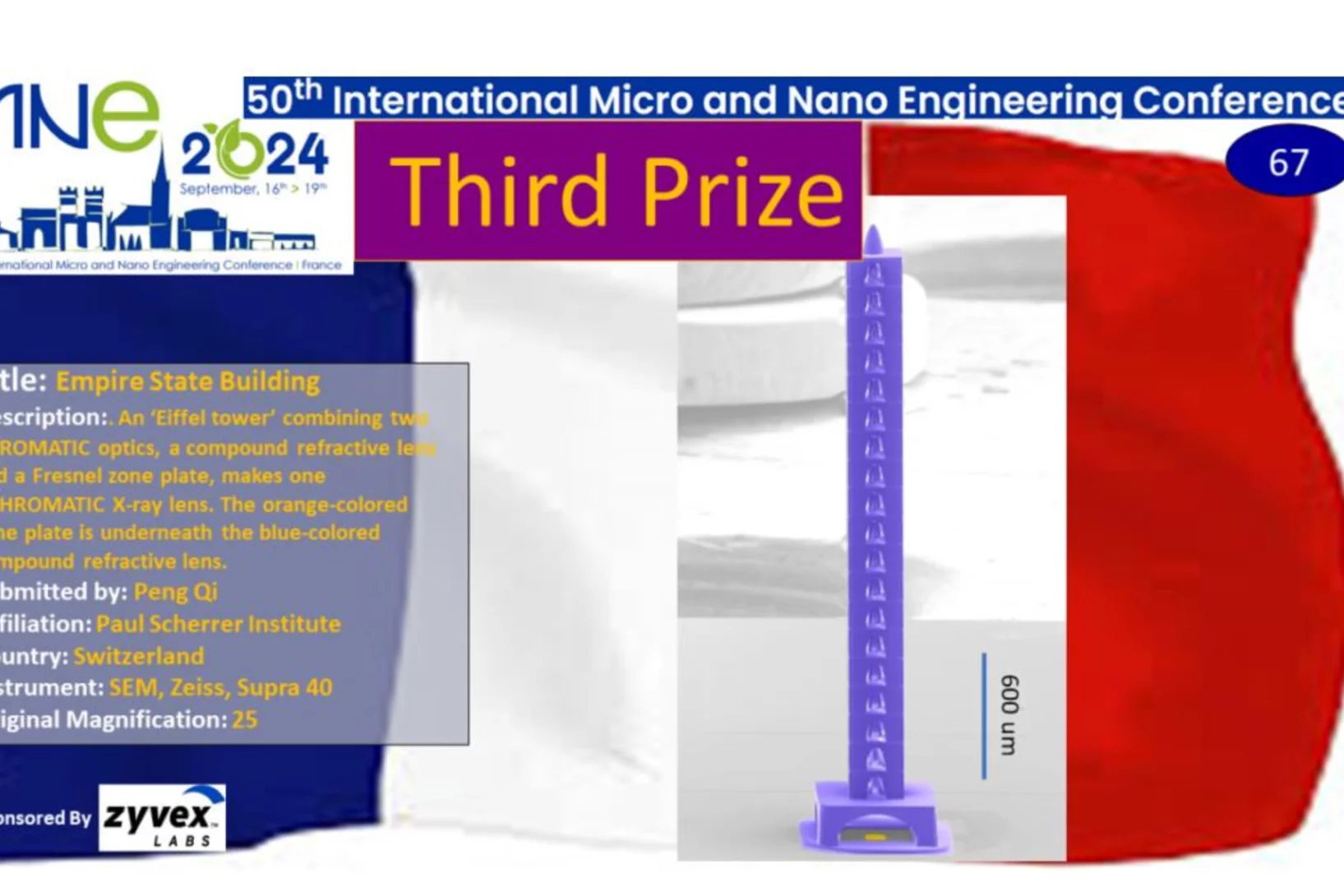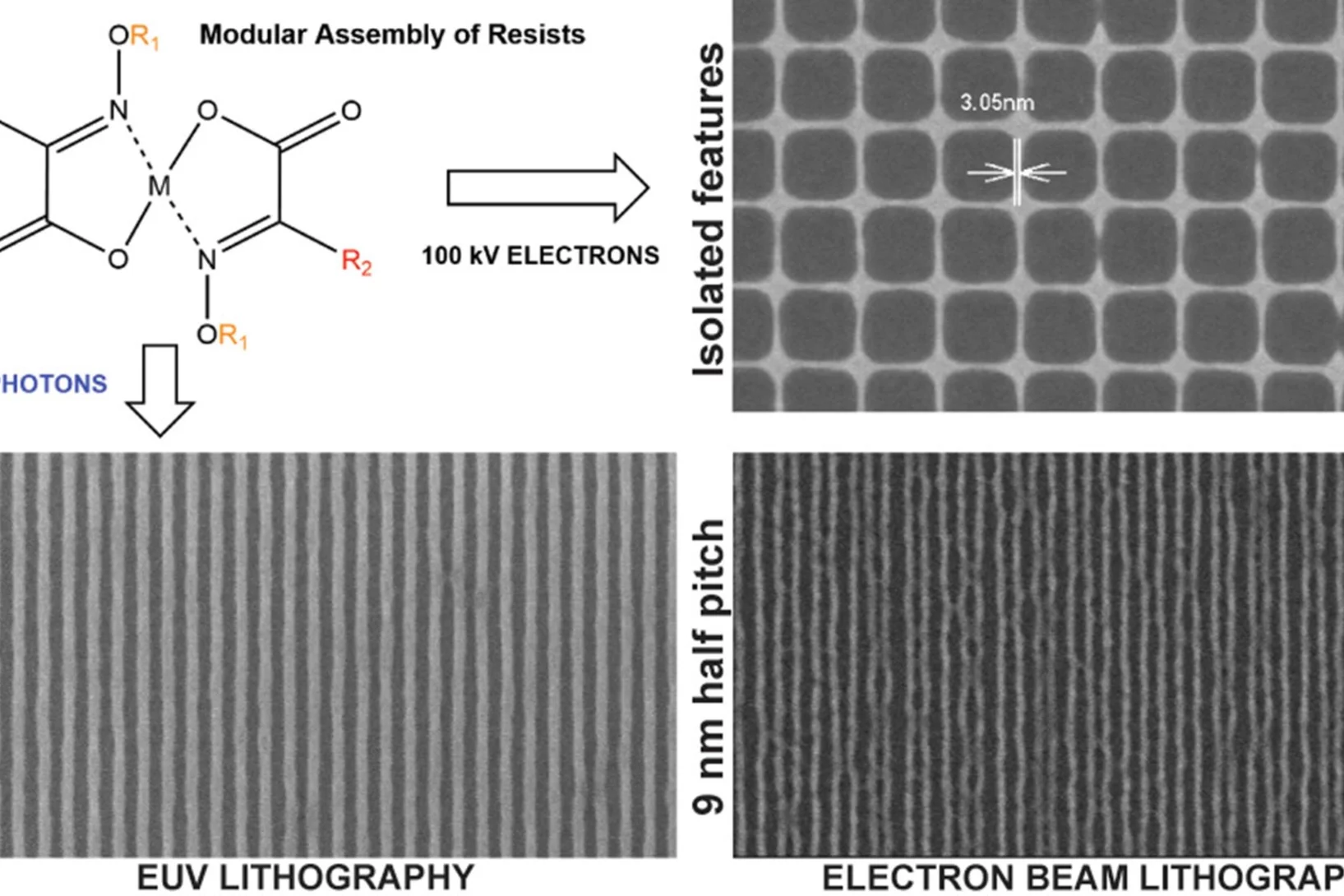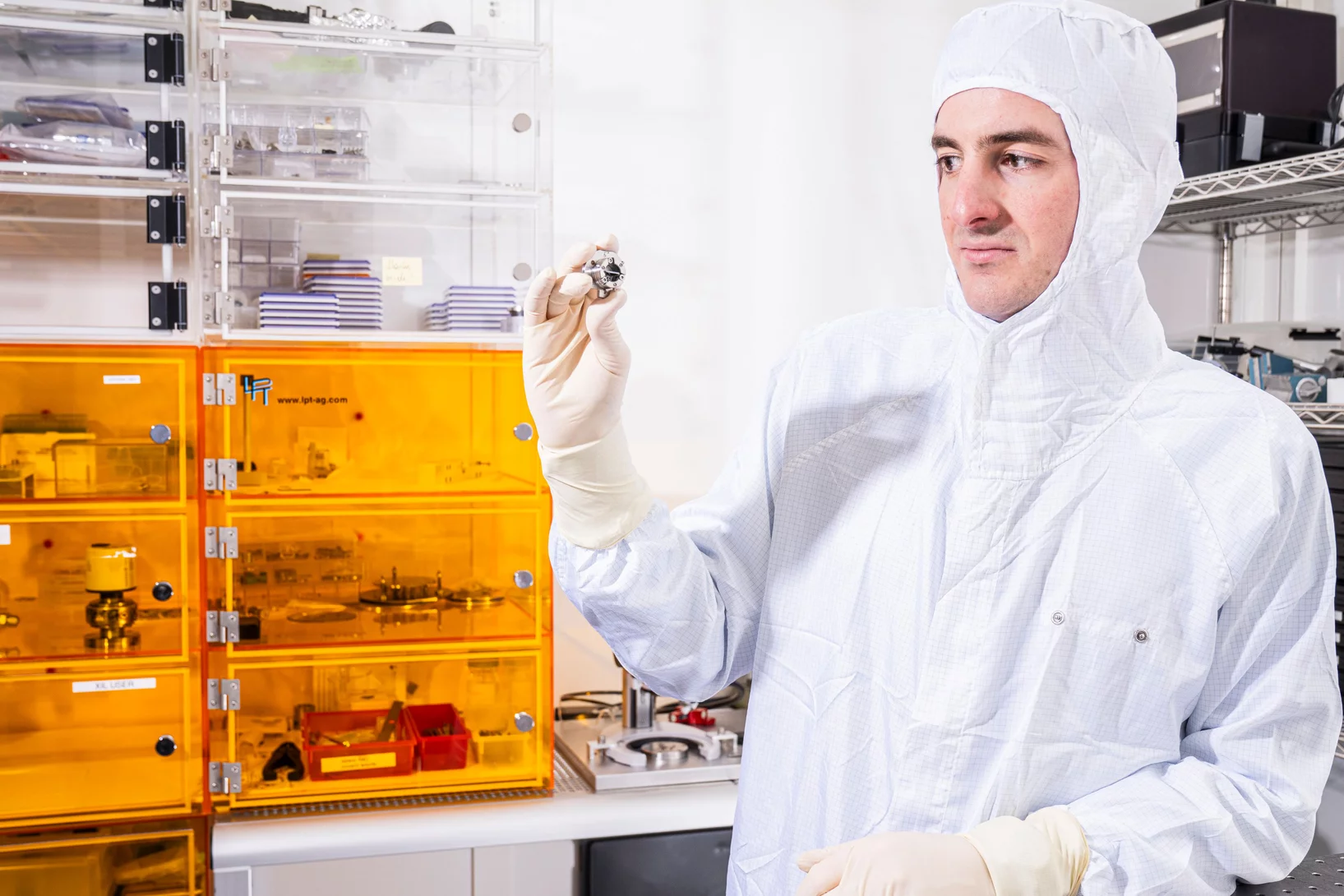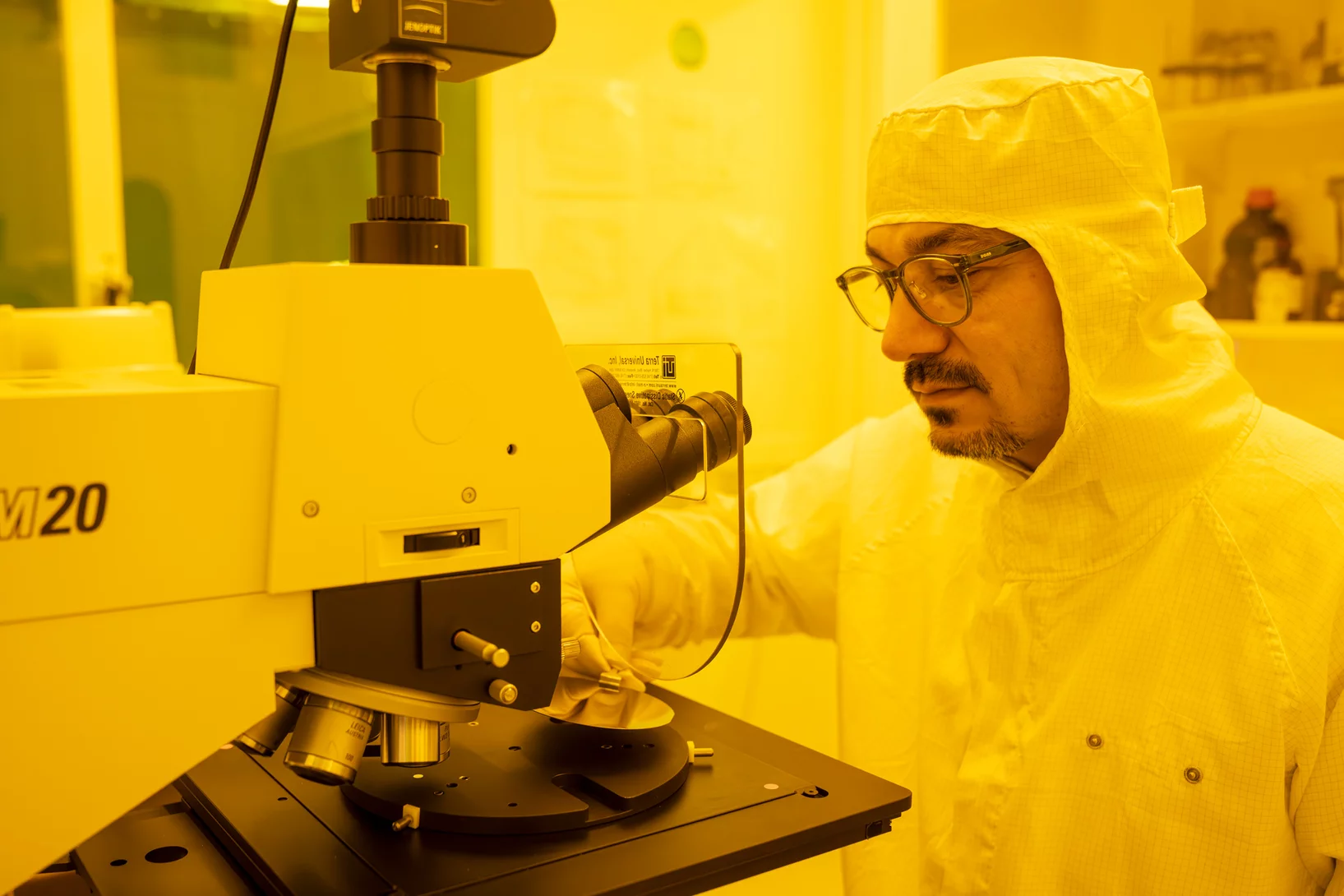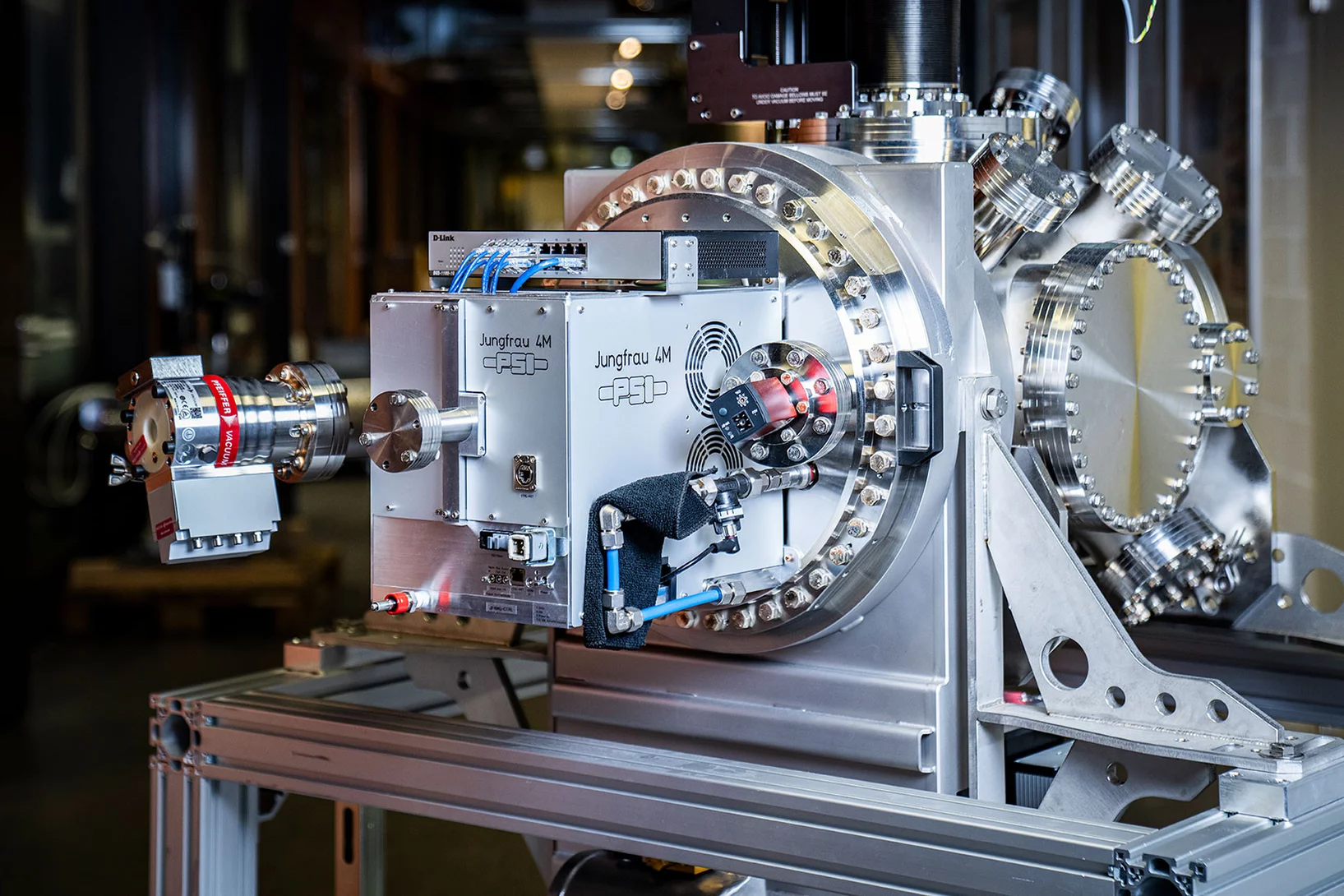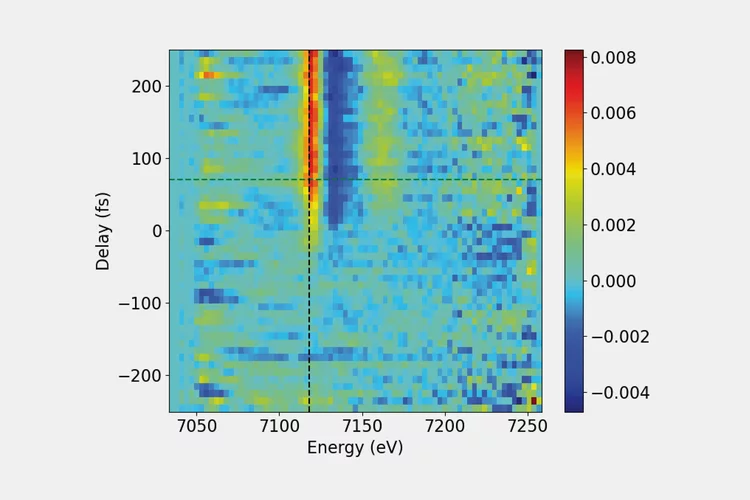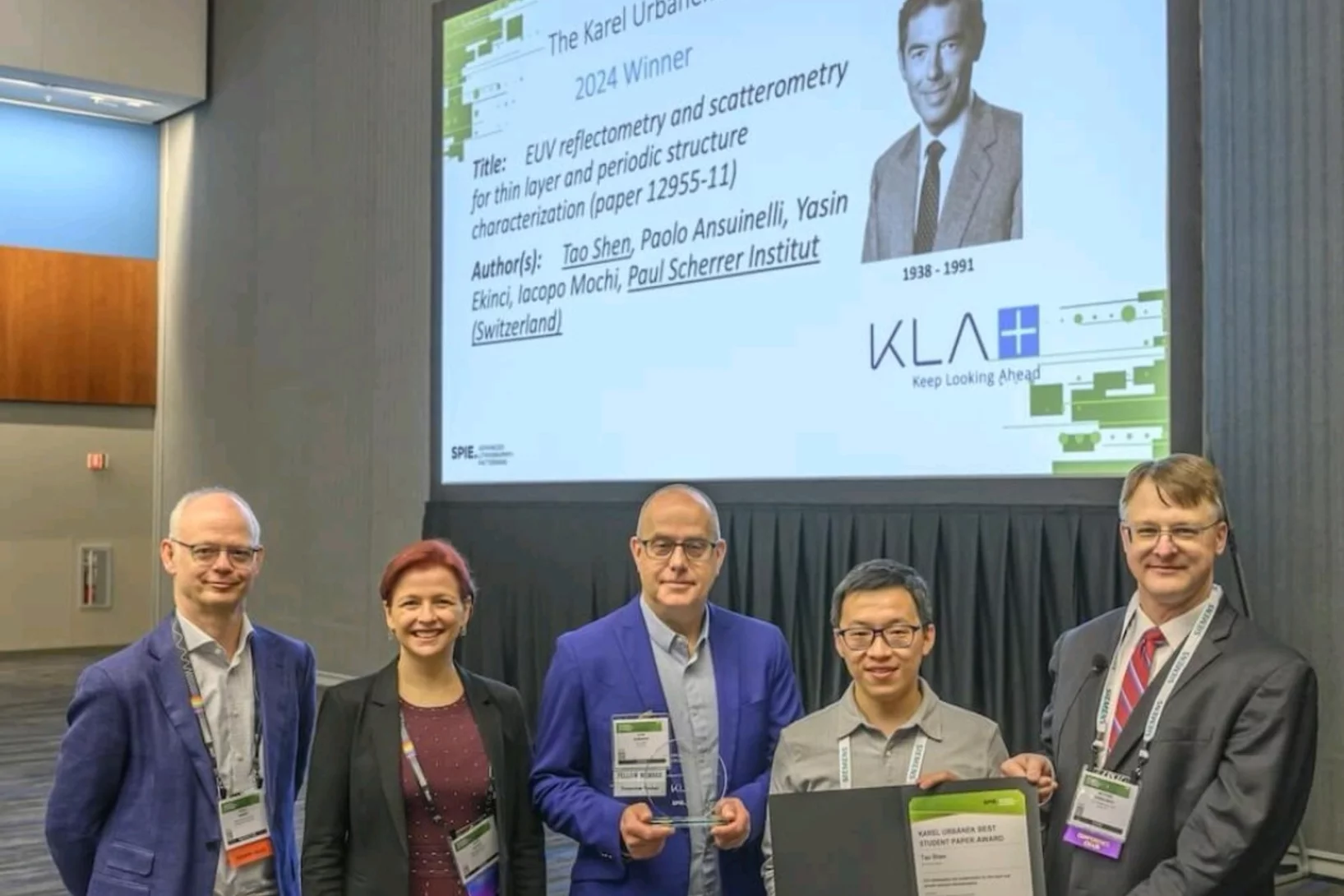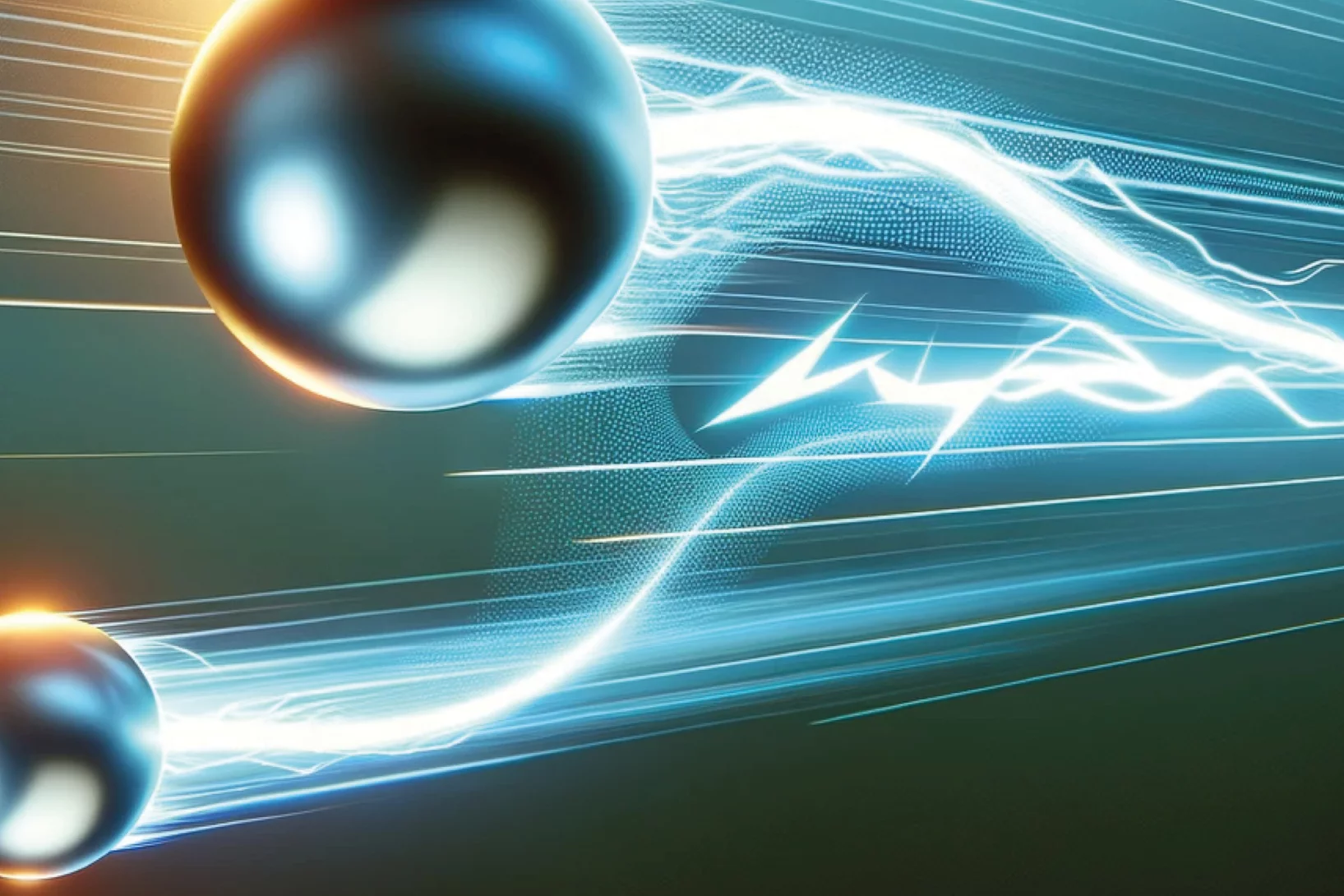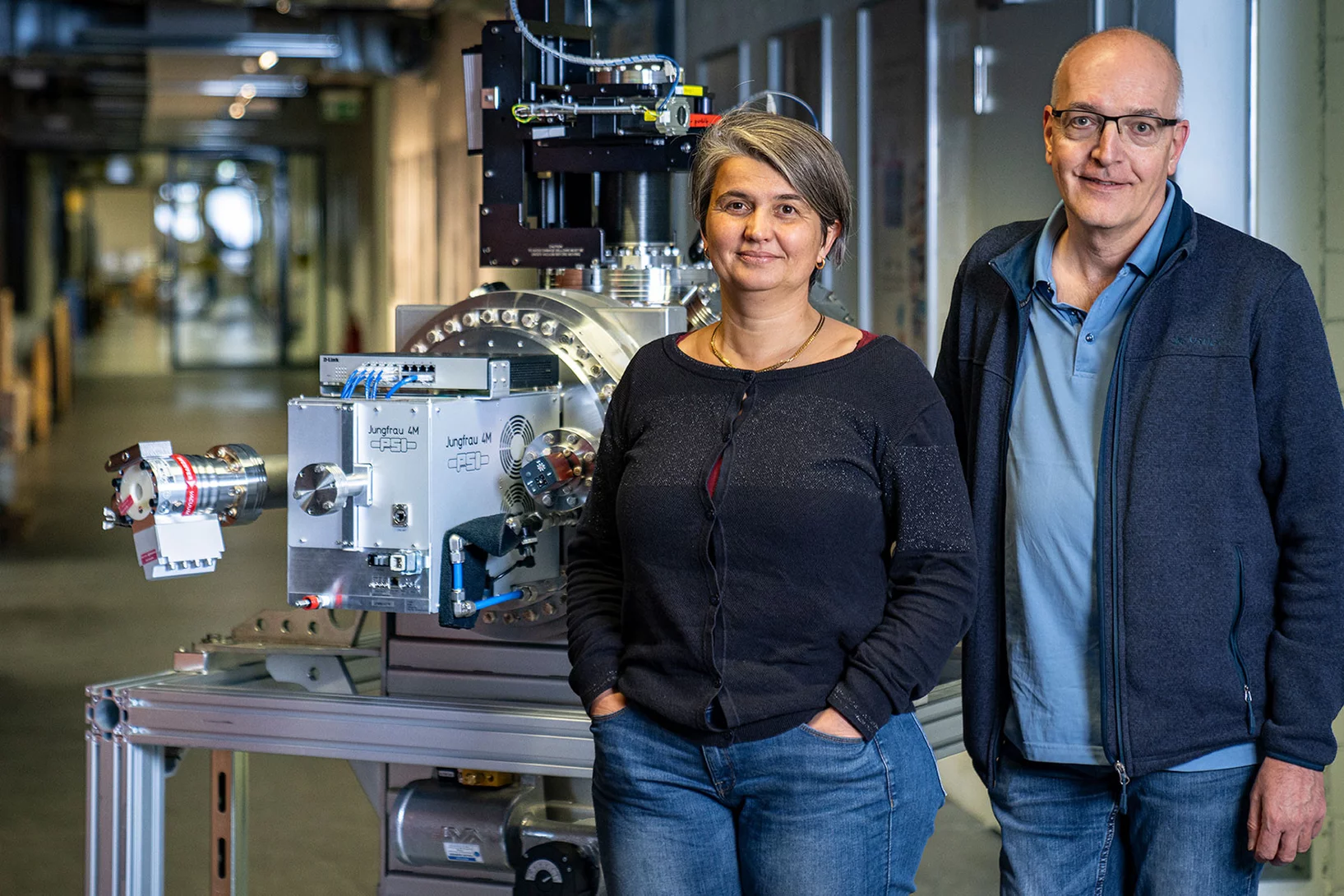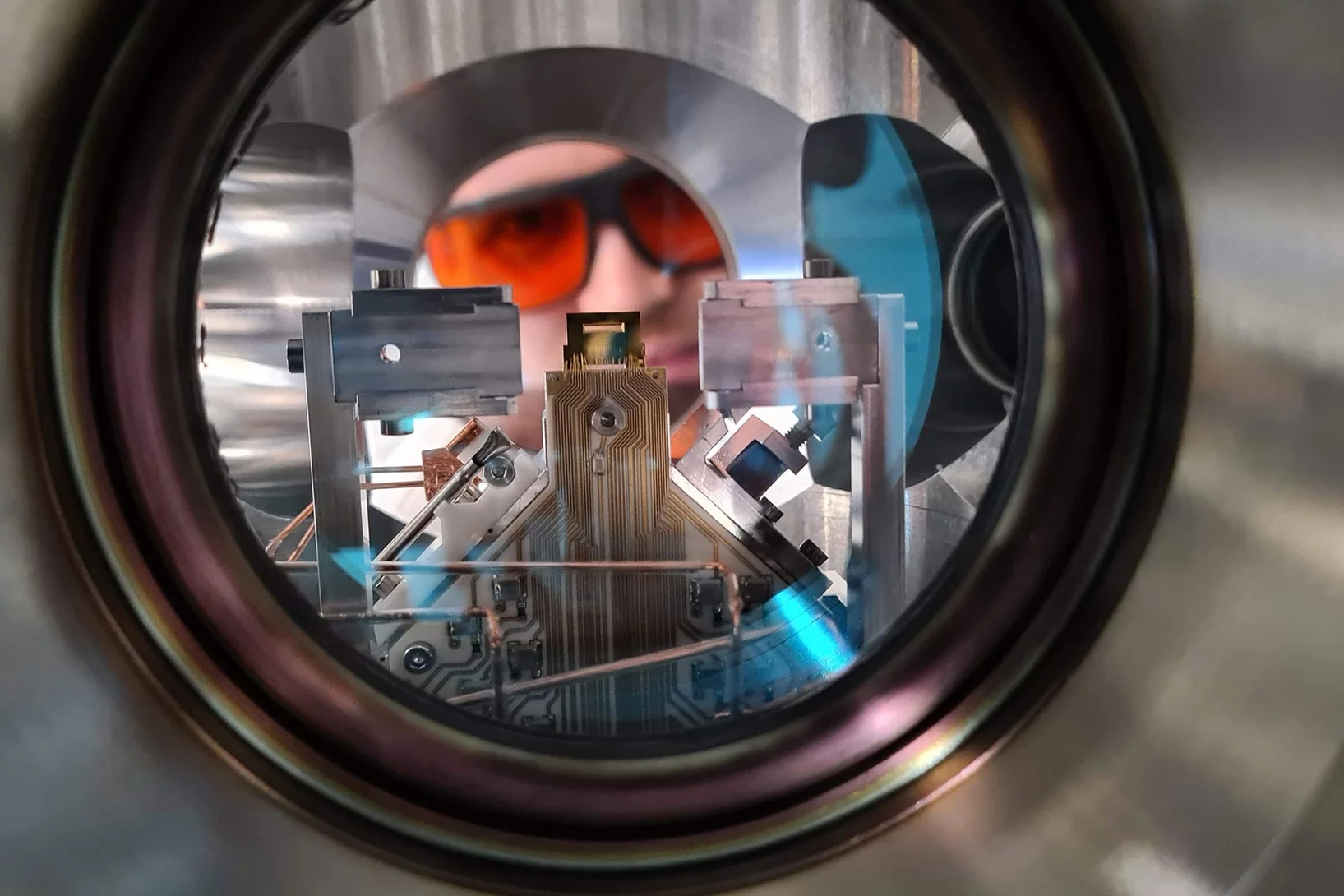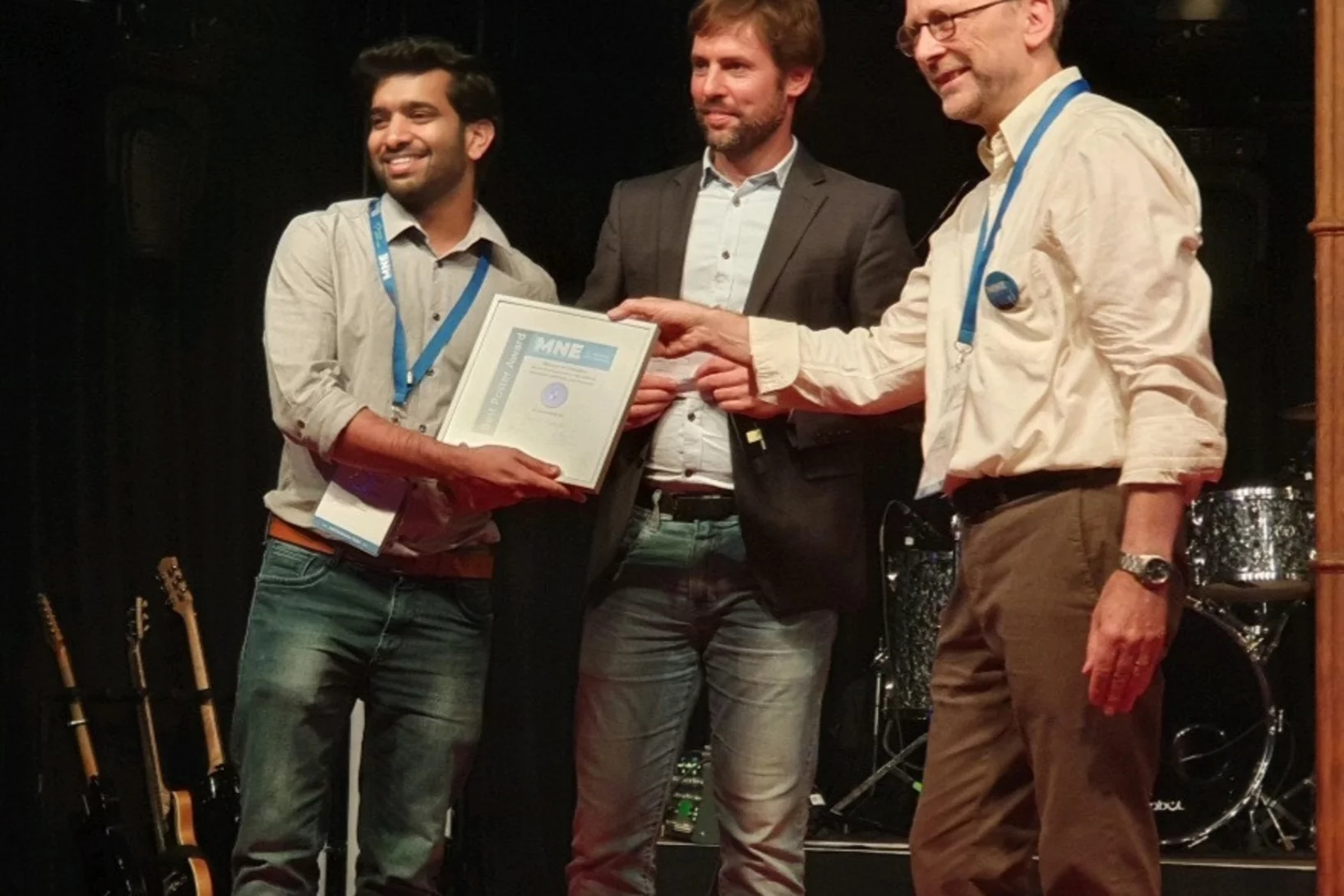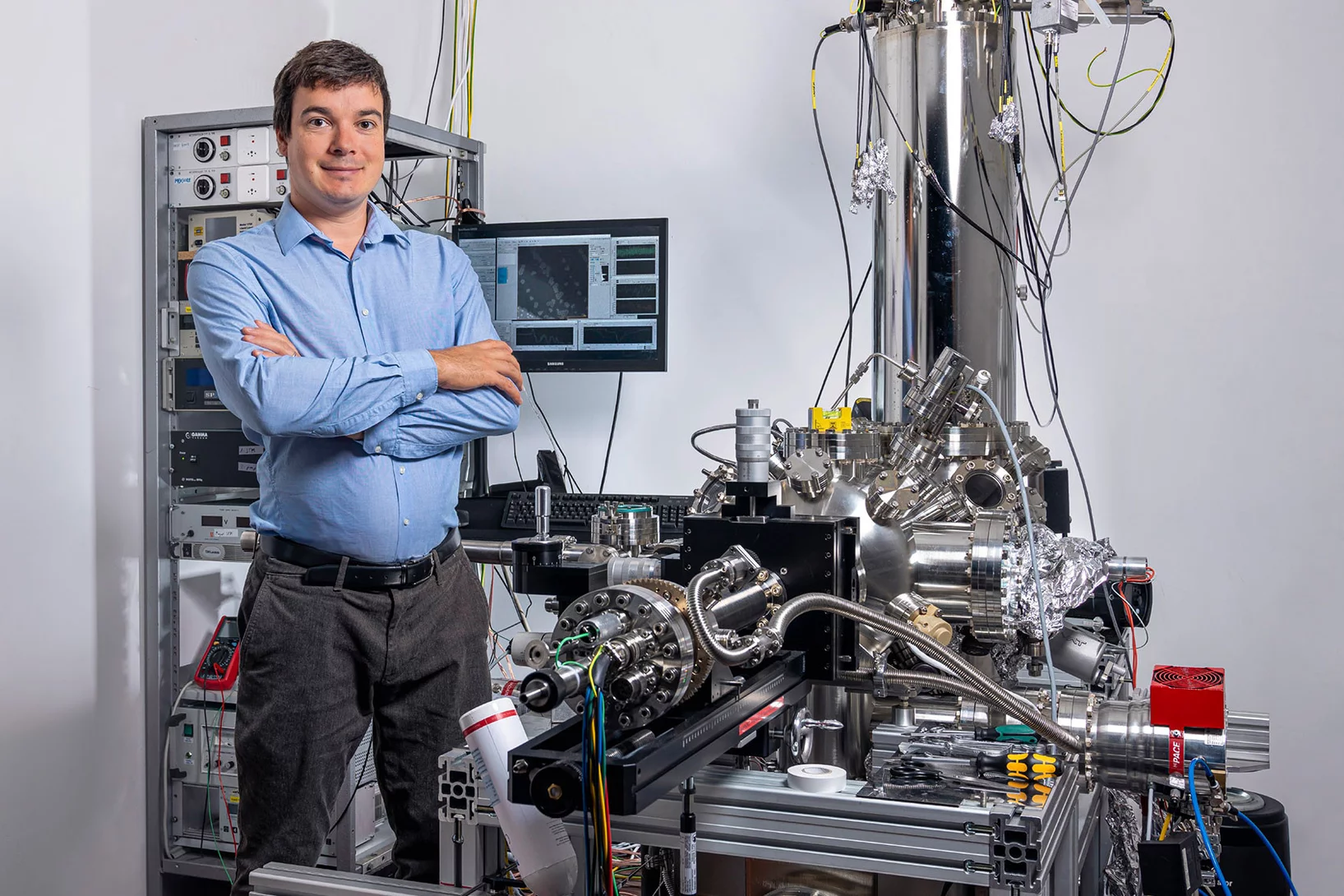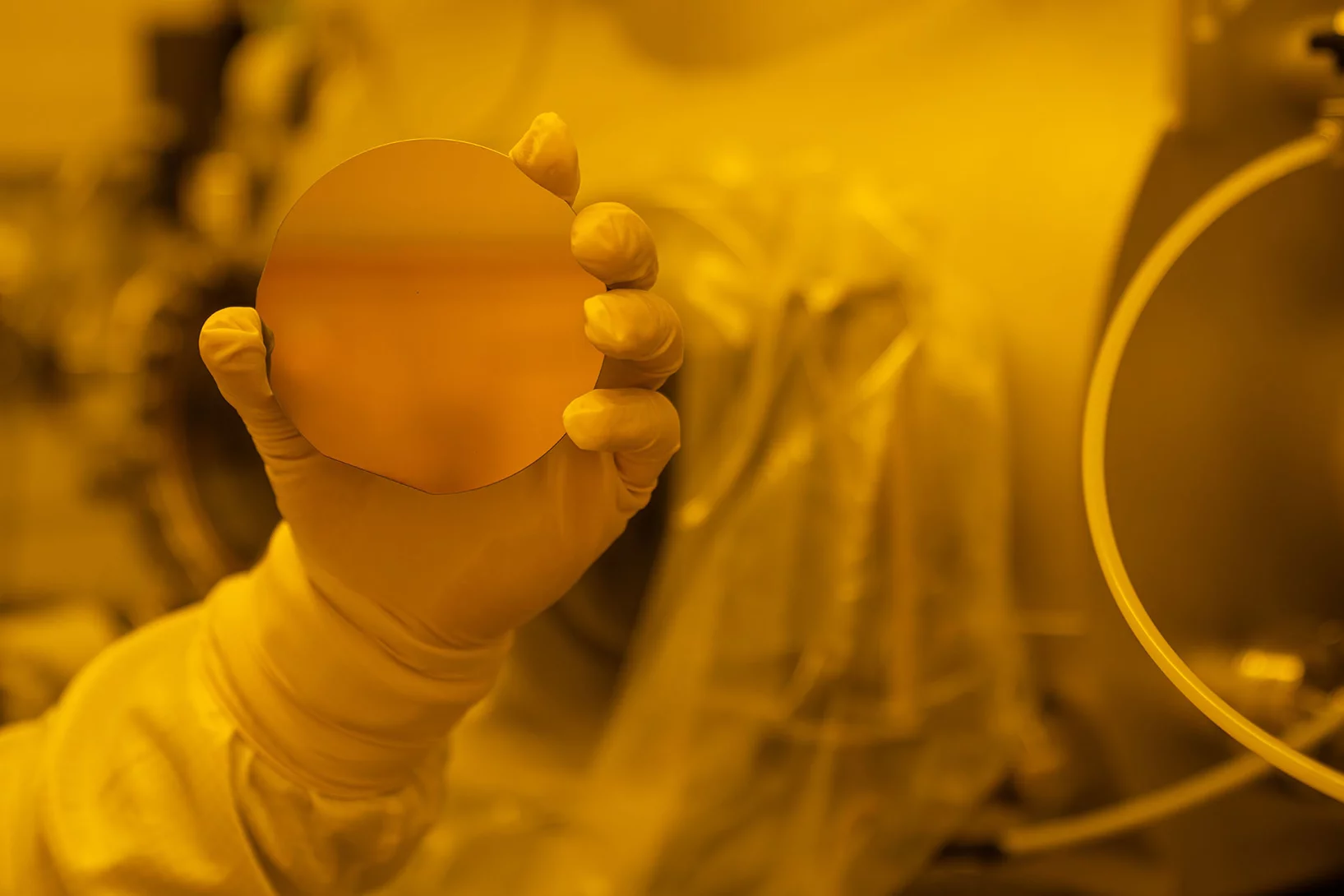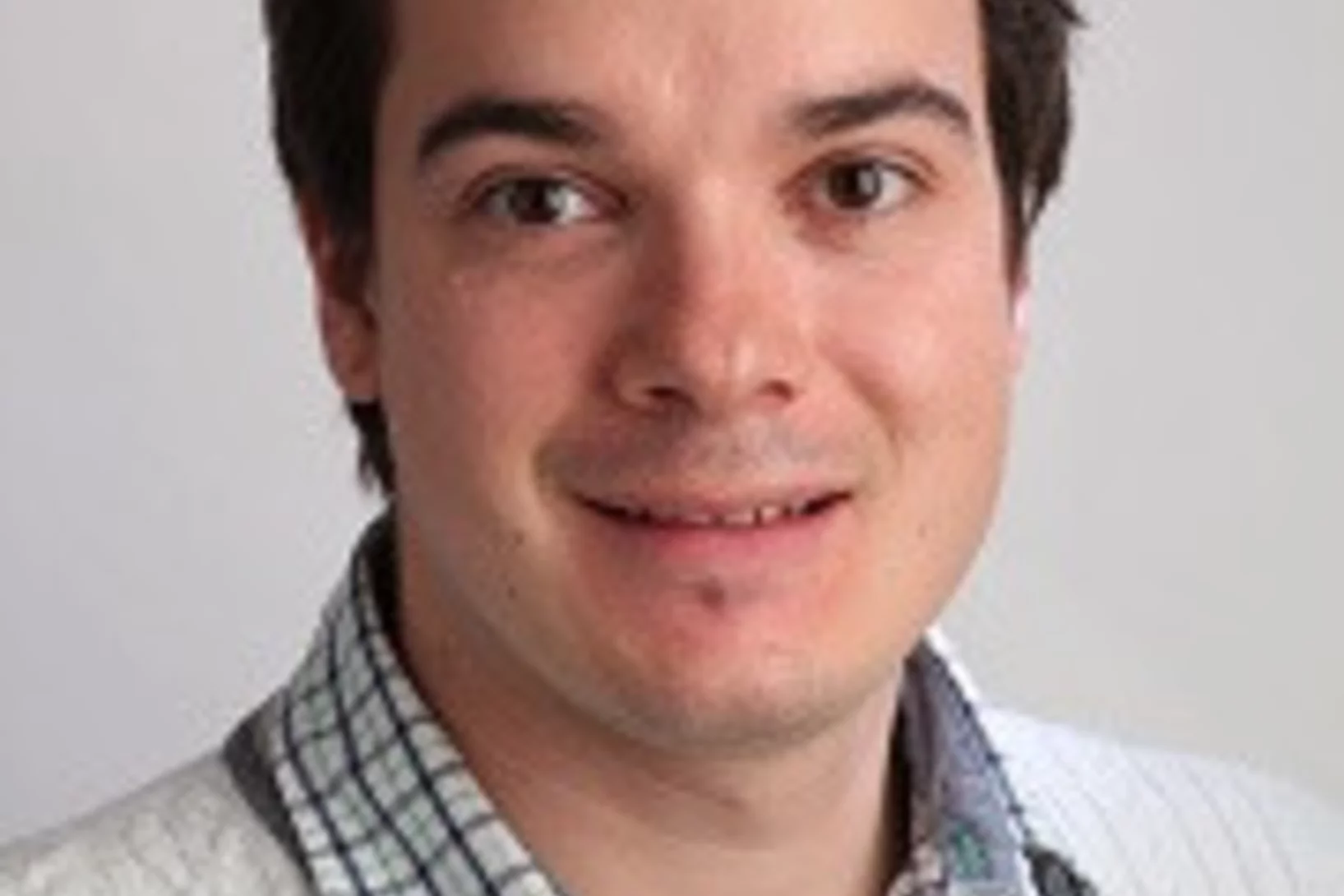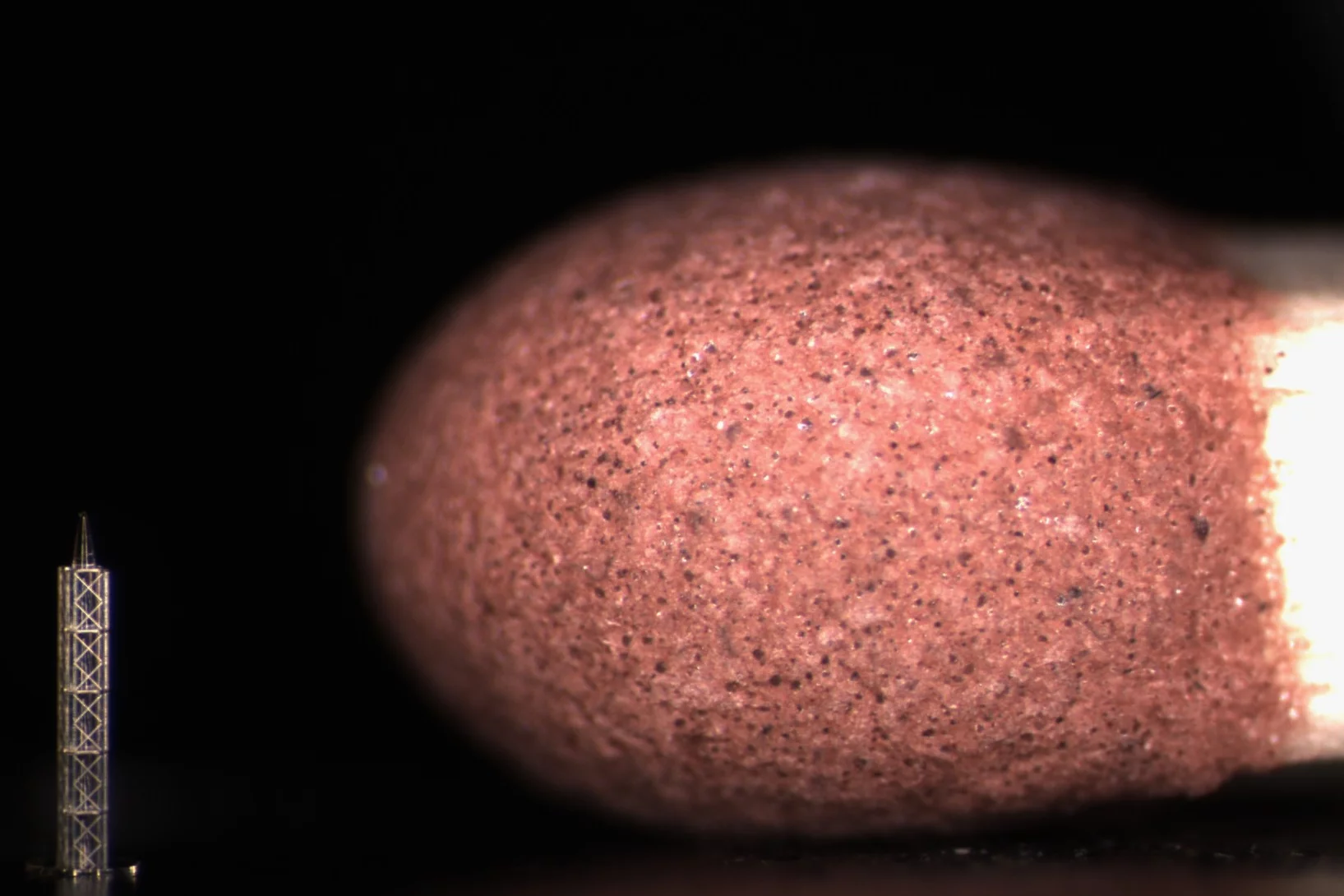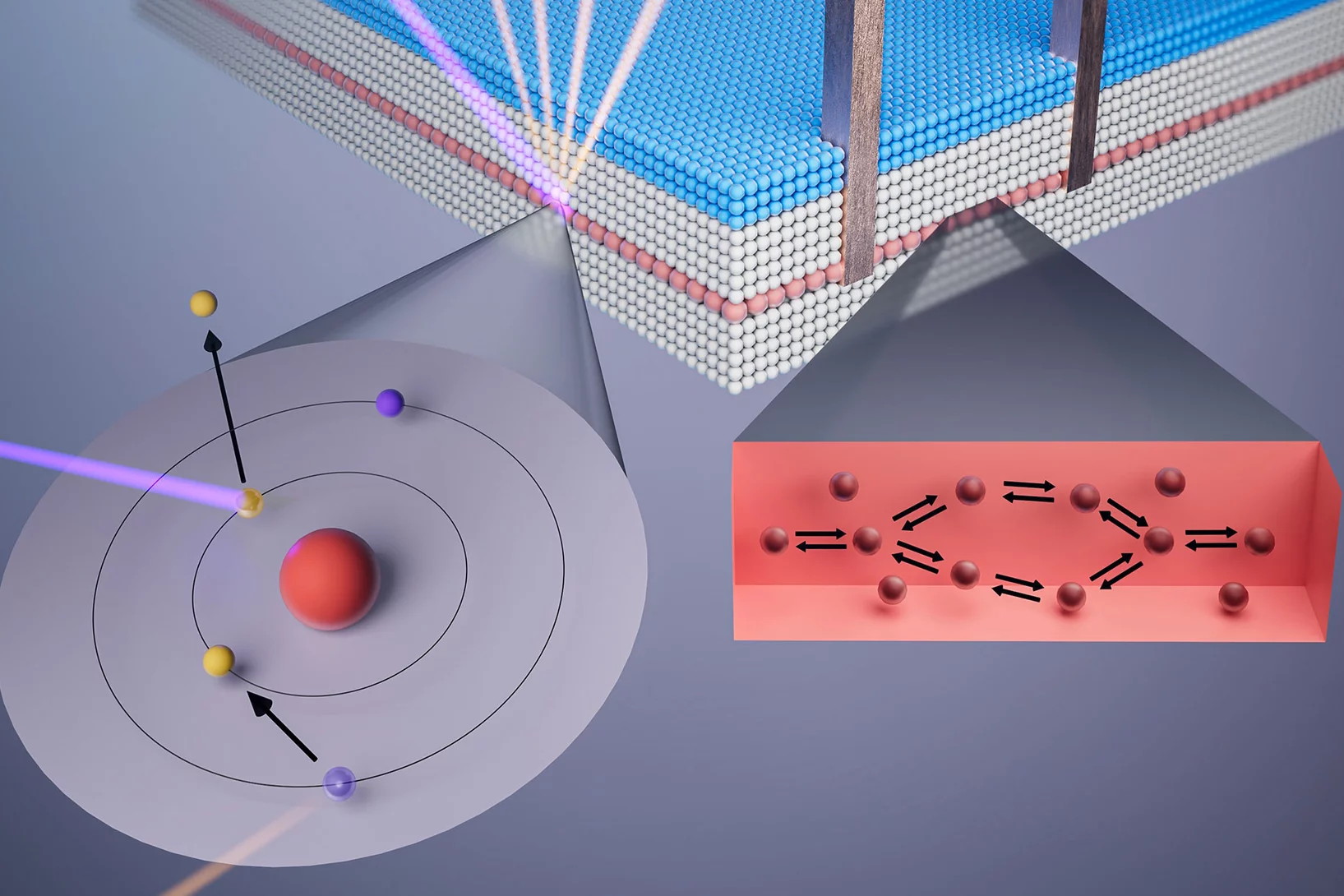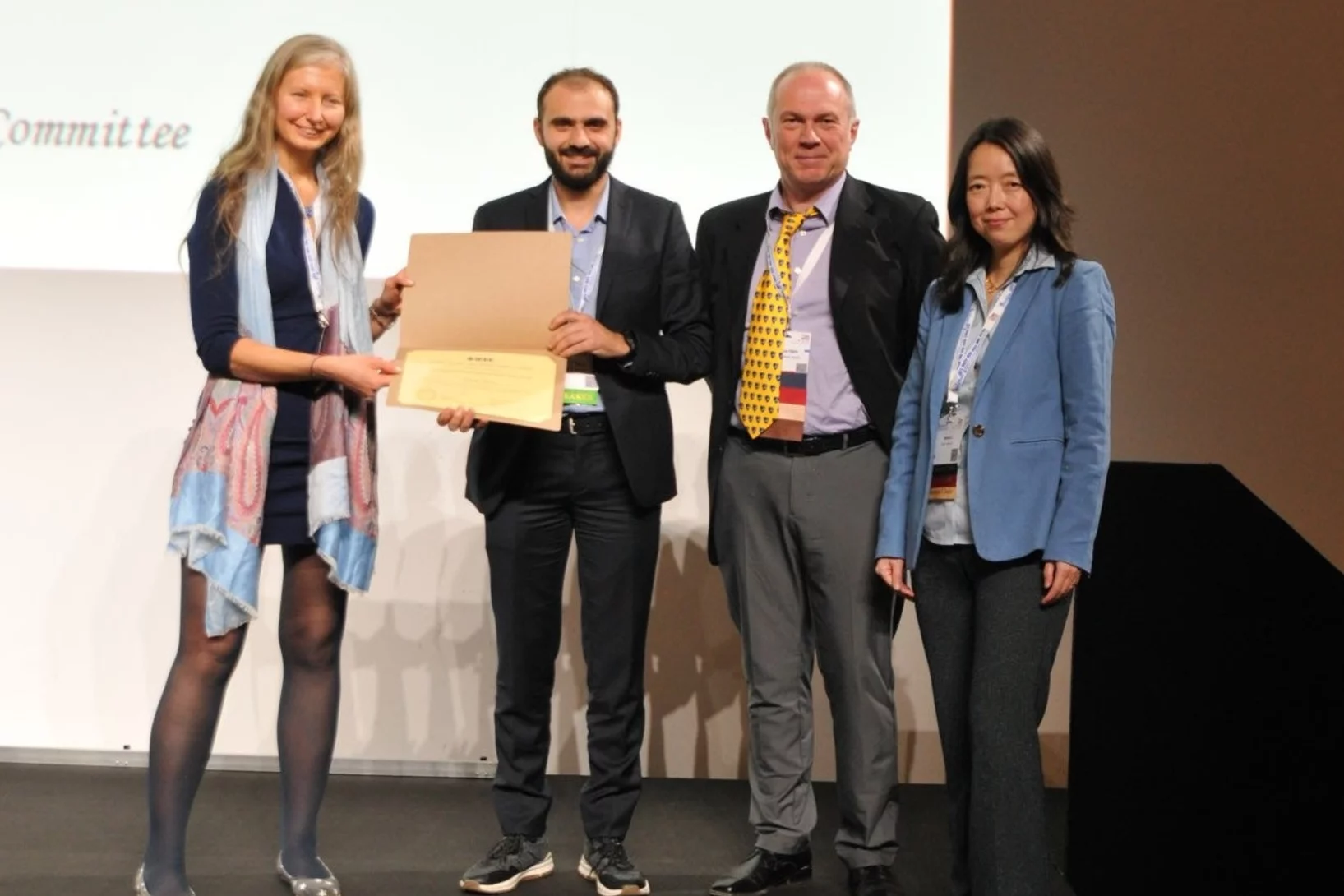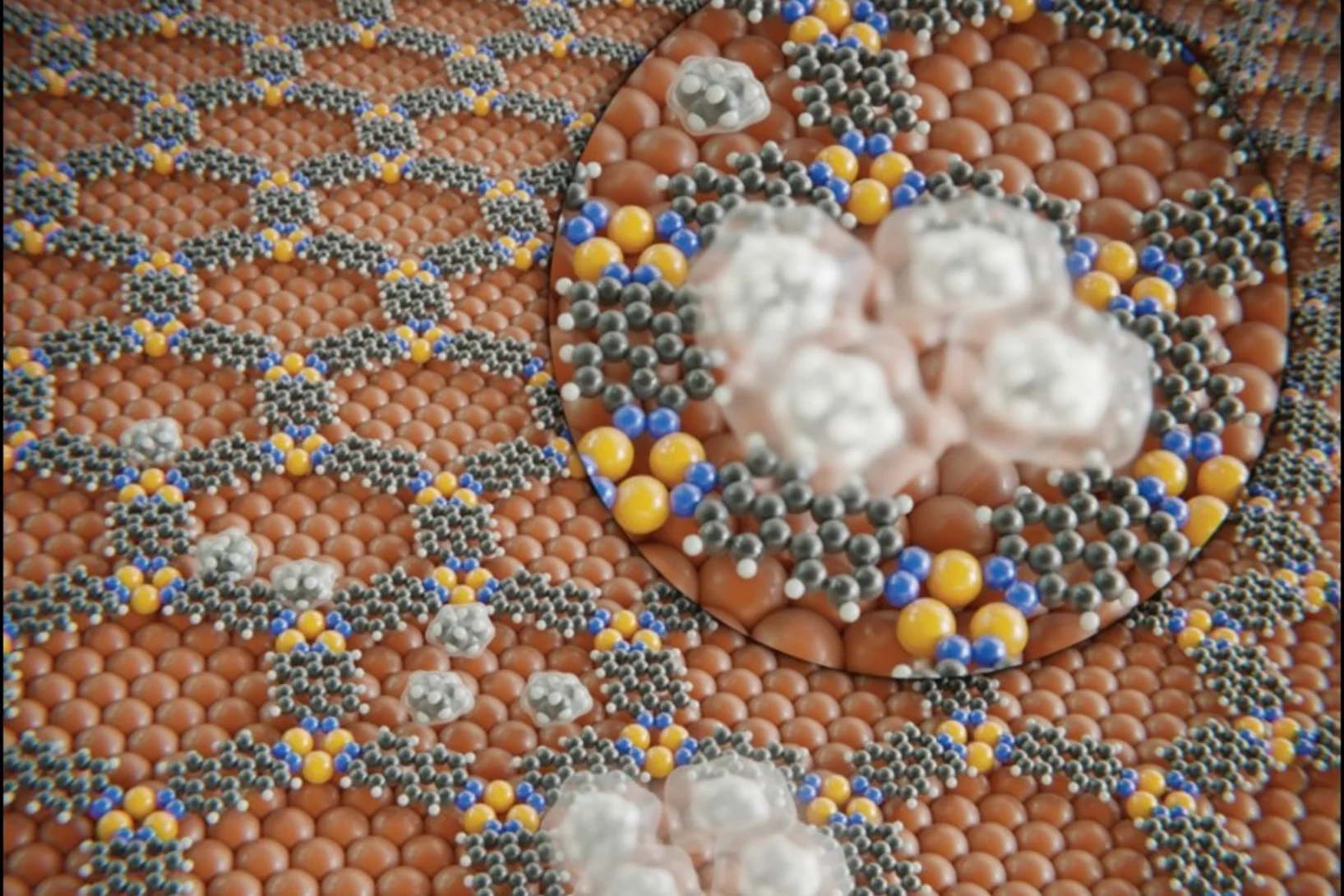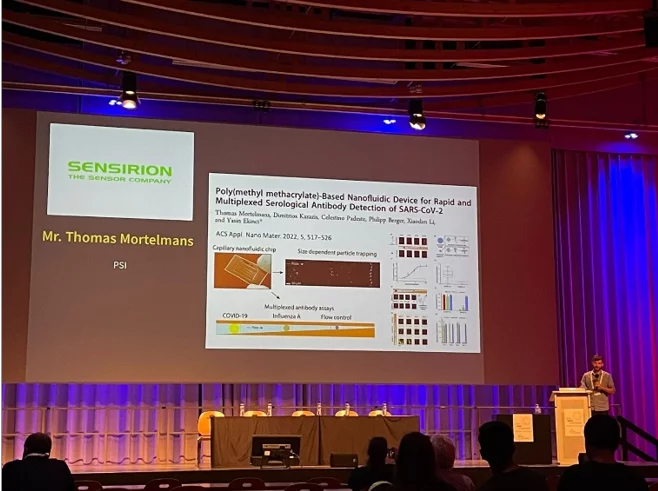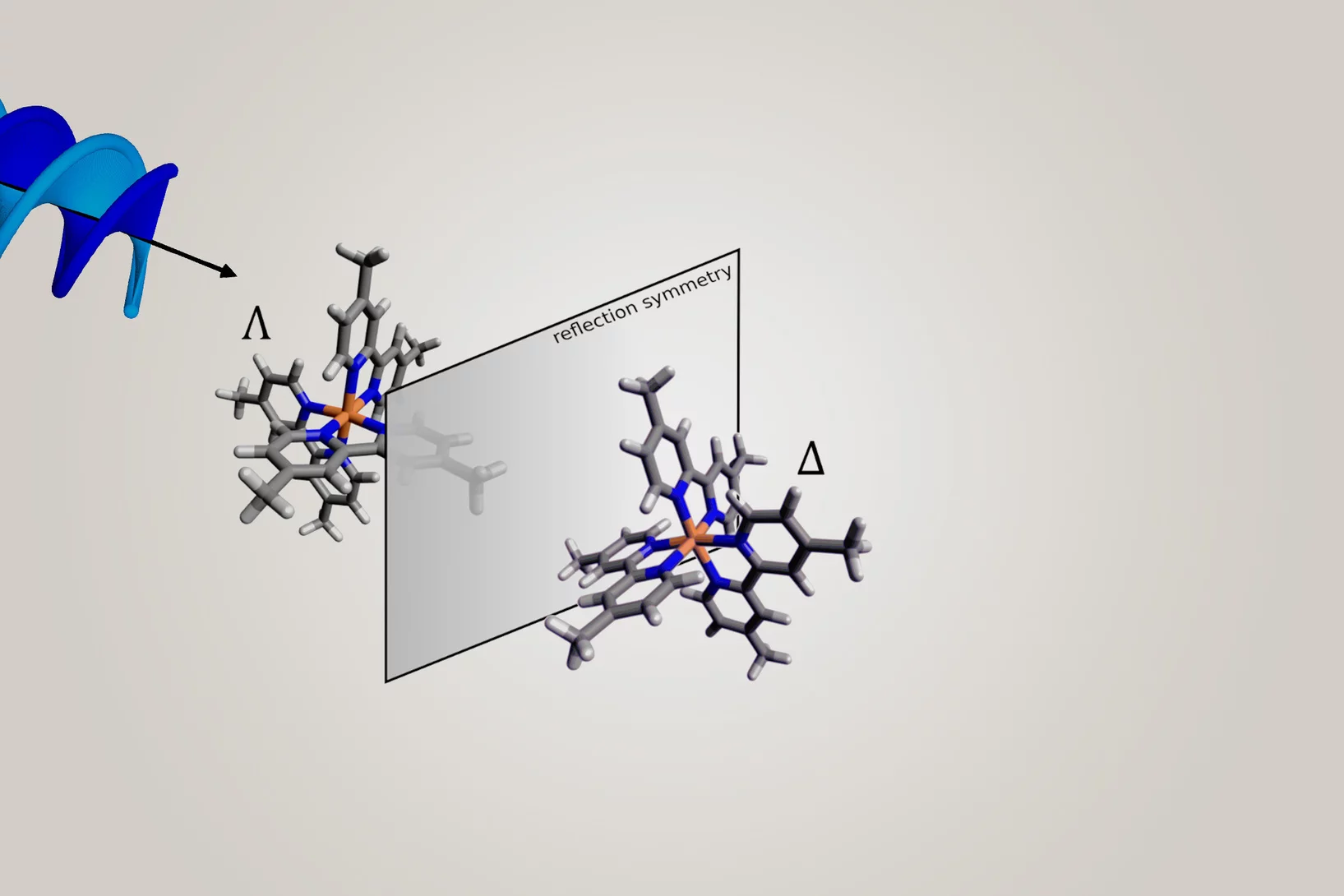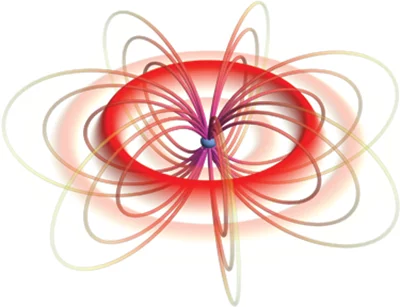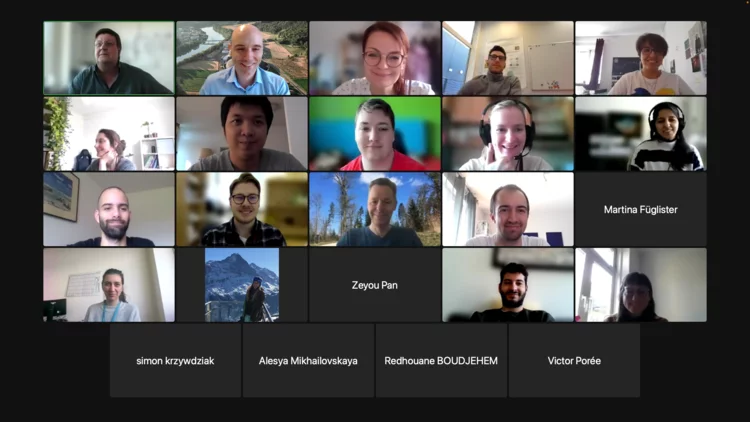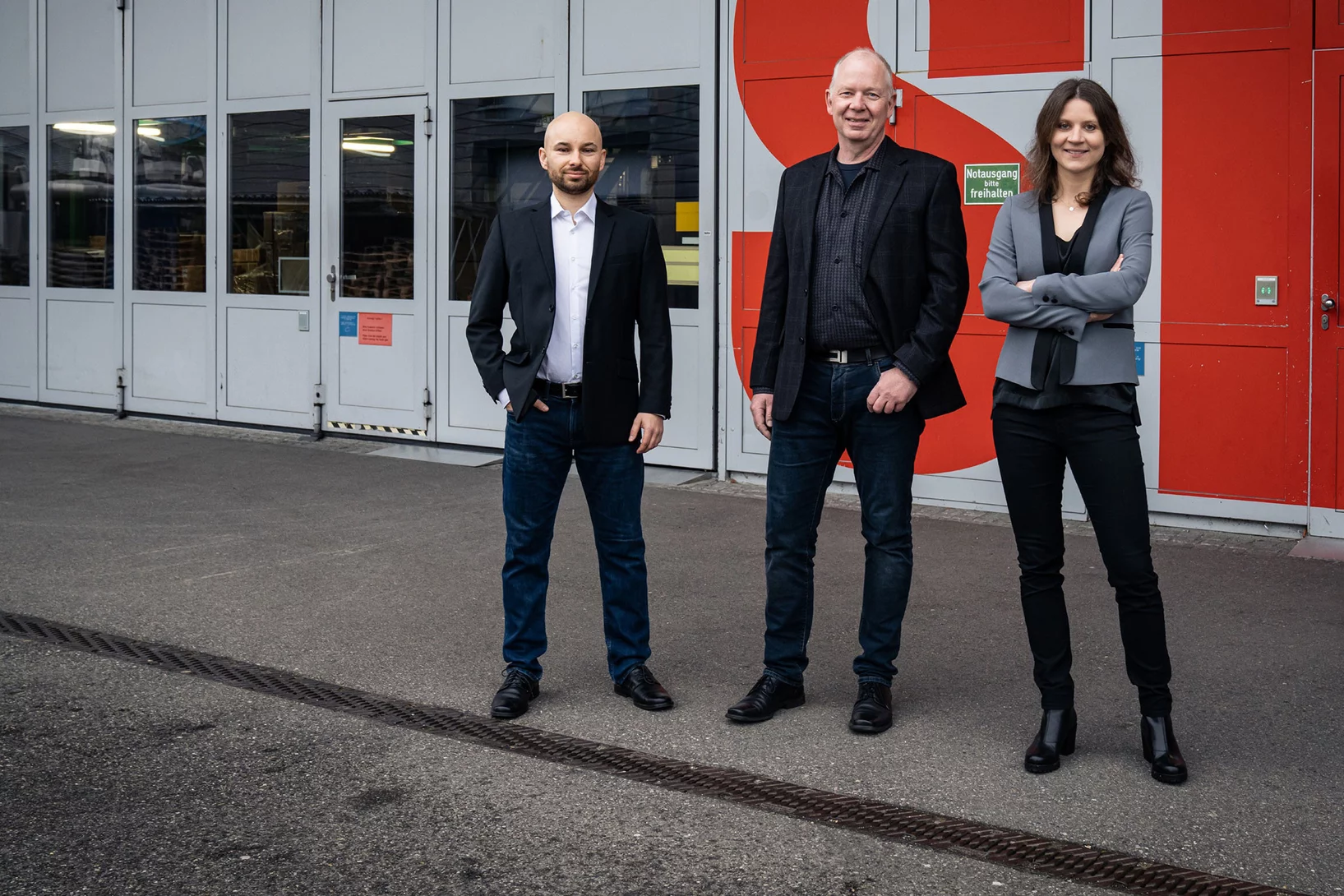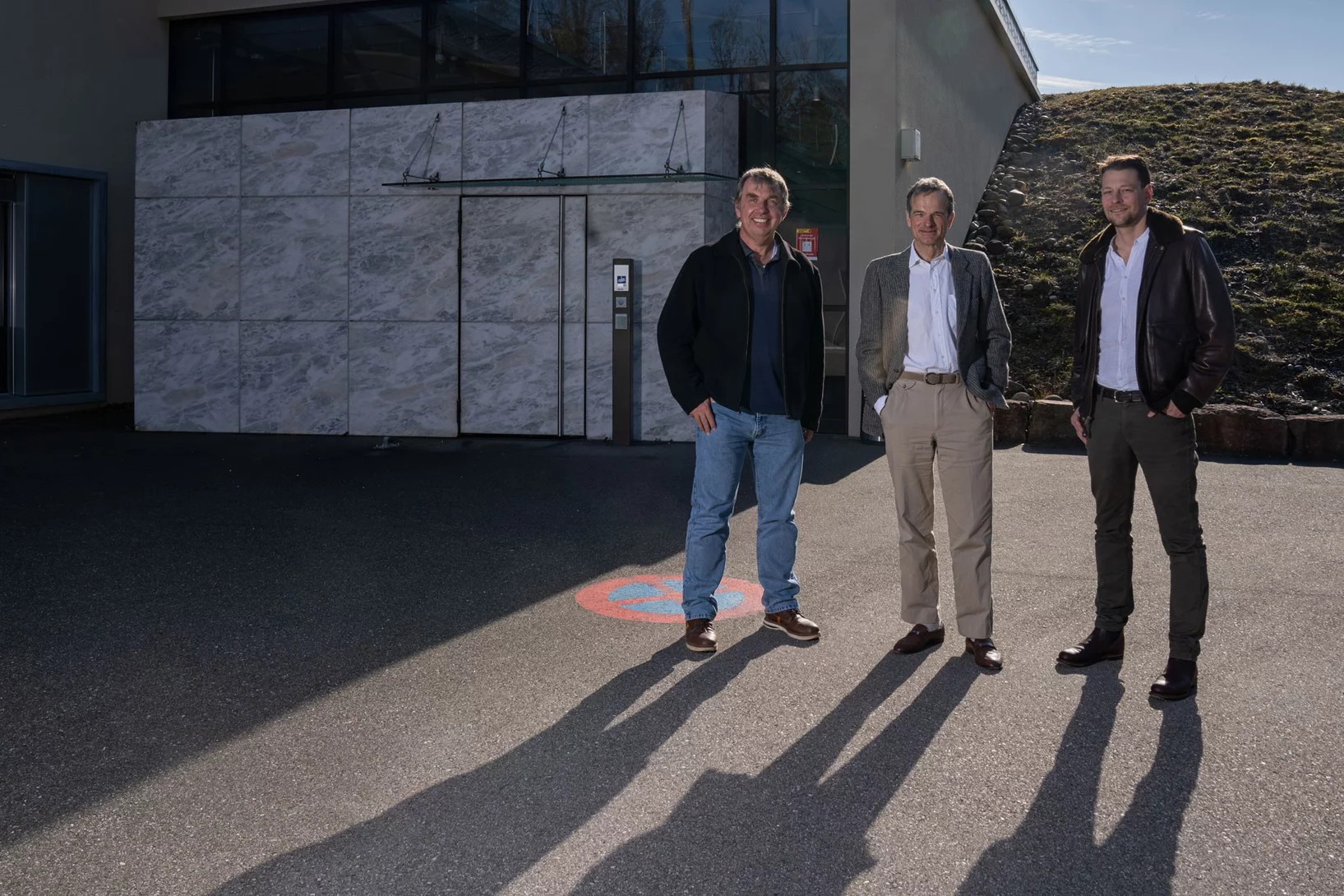Show filters
Single-Photon-Counting Detection for Soft X-rays Down to 530 eV
The PSI Photon Science Detector Group has developed the first single-photon-counting pixel detector capable of detecting soft X-rays down to 530 eV. This breakthrough was achieved by combining EIGER readout chips with novel inverse LGAD sensors, developed in collaboration with and fabricated at Fondazione Bruno Kessler (Italy). The detector is now in user operation for ptychographic applications, where it has already enabled significant scientific results at the Fe L₃-edge (707 eV) and even at the O K-edge (530 eV), demonstrating superior detection performance compared to commercially available state-of-the-art detectors.
Measuring How Molecules Communicate
A collaboration between PSI and the University of Vienna has resulted in a new experimental method that, for the first time, enables the direct measurement of partial charges in molecules. Partial charges are fundamental to understanding molecular structure, interactions, and reactivity, yet until now no general technique existed to determine them experimentally.
Aperiodic Chiral Tiling by Molecular Self-Assembly
The 2D self-arrangement of a molecule that resembles three-armed spirals leads to a triangular pattern that is effectively aperiodic.
The Quantum Revolution: What's Next?
A century on from the birth of quantum mechanics, 2025 marks the UNESCO International Year of Quantum Science and Technology. What does the future hold? Our experts share their opinions.
Quand la science rencontre l’industrie, l’innovation a de l’impact
Hans Priem et Cees Maris de l’entreprise VDL ETG nous expliquent ce que signifie la fabrication avancée dans l’industrie et évoquent la collaboration avec le PSI.
Recognition at MNE 2024 Micrograph Contest
The MNE conference is the flagship event of the International Society for Micro- and Nanotechnology (iMNEs). The research fields covered by the MNE conferences have consistently driven advancements in the development of smaller and smaller structures. To emphasize the significance of micrographs in this field, the conference features a micrograph contest, sponsored and hosted by Zyvex Labs. Entries are judged based on both their technological relevance and artistic merit.
This year, Peng Qi from the X-ray Nano Optics group, LXN, CPS, earned third place and an honorable mention for his two submitted images.
Novel Photoresist Chemistry Enables Lithography Approaching Angstrom-Scale Resolution
Photoresist materials are crucial in the manufacturing of computer chips, where the circuits are initially printed in the photoresist using photolithography. As the demand for smaller and more precise circuitry in computer chips grows, photoresists must resolve features with smaller sizes and higher density. One of the factors determining the ultimate resolution in lithography is the molecular size/mass of the photoresists.
Des scientifiques montrent que les puces informatiques pourraient être miniaturisées encore davantage
Des chercheurs du PSI atteignent une résolution sans précédent de 5 nanomètres (demi-pitch) grâce à la lithographie EUV.
Nouveau procédé de fabrication de semi-conducteurs
L’Institut Paul Scherrer PSI travaille avec l’entreprise finlandaise PiBond à l’utilisation commerciale de produits semi-conducteurs avancés fabriqués par lithographie EUV.
Developing detectors to transform science with light (part 2)
Part II: Why detecting soft X-rays is hard, and how a new breakthrough is set to transform low energy X-ray science.
Efficient transient X-ray absorption spectroscopy
By combining the unique large bandwidth emission mode of SwissFEL’s ARAMIS undulator and diffractive X-ray optics made of diamond, we have demonstrated a new method for time-resolved X-ray absorption near edge structure (XANES) spectroscopy that enables faster data acquisition and requires smaller sample quantities for high-quality data.
2024 SPIE Advanced Lithography + Patterning, San Jose, California
2024 SPIE Advanced Lithography + Patterning symposium hosted leading researchers who are solving challenges in optical and EUV lithography, patterning technologies, metrology, and process integration for semiconductor manufacturing and adjacent applications. The symposium features six conference topics.
Charge fractionalisation observed spectroscopically
Quantum mechanics tells us that the fundamental unit of charge is unbreakable – but exceptions exist.
Developing detectors to transform science with light (part 1)
Part I: How the Jungfrau detector went from inception to perfection to ubiquity.
Solid-state qubits: Forget about being clean, embrace mess
So says new recipe for dense arrays of qubits with long lifetimes.
Utiliser dès aujourd’hui des calculateurs quantiques
Les calculateurs quantiques analogiques permettent d’observer des réactions chimiques ultrarapides.
LXN post-doctoral researcher Dr. Prajith Karadan wins Best Poster Award at MNE conference 2023, Berlin
The MNE (Micro and Nano Engineering) conference is a prestigious annual event that serves as a global platform for experts, researchers, and innovators in the field of micro and nanotechnology. This conference brings together leading minds from academia and industry to share cutting-edge research, exchange ideas, and explore emerging trends and breakthroughs in the world of micro and nanoengineering.
«Les chaînes moléculaires pourraient être intéressantes pour l’électronique du futur»
Christian Wäckerlin évoque la recherche fondamentale qu’il mène sur des nanofils et de possibles applications.
Un nouveau procédé pour des puces informatiques encore plus compactes
Des scientifiques utilisent du rayonnement ultraviolet extrême pour fabriquer de minuscules structures destinées aux technologies de l’information.
Dr Christian Wäckerlin is appointed as assistant professor at EPFL
Dr Christian Wäckerlin (*1983), currently Research and Teaching Associate at EPFL and Project Leader at the Paul Scherrer Institute (PSI), as Assistant Professor of Physics in the School of Basic Sciences. Christian Wäckerlin’s research focuses on nanoscience and quantum engineering.
Apochromatic X-ray focusing
A team of scientists from the Paul Scherrer Institut, the University of Basel and DESY have demonstrated the first-ever realization of apochromatic X-ray focusing using a tailored combination of a refractive lens and a Fresnel zone plate. This innovative approach enables the correction of the chromatic aberration suffered by both refractive and diffractive lenses over a wide range of X-ray energies. This groundbreaking development in X-ray optics have been just published in the scientific journal Light: Science & Applications.
Quality control of future transistors: Tackling the challenge of looking at atoms buried in silicon without moving them
Tackling the challenge of looking at atoms buried in silicon without moving them
IEEE Early Career Award 2022
For contributions to the development of detectors for XFELs and specifically for their verification, characterization, and calibration
Dancing molecules
When cycloalkanes are enclosed in a nanometer-sized pore, they adapt their shape - similar to the induced fit concept described in #biochemistry. The molecules do not all behave in the same way and surprisingly start to move when there is a lack of space at 5K.
Thomas Mortelmans receives the Swiss Nanotechnology PhD award
Thomas Mortelmans has been a PhD at the Laboratory for X-ray Nanosciences and Technologies for the last four years. He recently defended his PhD-thesis at the University of Basel entitled: "The development of a nanofluidic particle size sorter and its biomedical sciences" and was awarded the grade of summa cum laude.
Différencier plus facilement les molécules chirales
Des chercheurs ont démontré que les rayons X dotés d’un front d’onde hélicoïdal permettent de mieux différencier les énantiomères, des molécules qui sont les images-miroir l’une de l’autre.
Light-Induced Magnetization at the Nanoscale
Targeted manipulations of an atom's magnetic moment are tricky, as the charge currents used for this process are extremely difficult to control . Now, a consortium of collaborators in Germany, Switzerland, Slovenia and Italy reports on a solution to this problem in the cover page article of Physic Review Letters 128, Vol. 15. As it appears, the magnetization of an atomic gas can be altered by high-power lasers using a patterned wave front. The method is promising for studying and manipulating the magnetic properties of matter at the nanoscale.
Hercules School 2022
PSI hosted again the Hercules School in March 2022. We had the pleasure to welcome 20 international PhD students, PostDocs and scientists to demonstrate our state-of-the-art techniques and methodologies at our large scale facilities, the Swiss Light Source (SLS), the Swiss Spallation Neutron Source (SINQ) and our free electron laser SwissFEL.
Une nouvelle lentille à rayons X facilite l’exploration du nanomonde
Une lentille achromatique pour la lumière de type rayons X est pour la première fois développée au PSI.
Opening the door to X-ray quantum optics
The 'perfect' X-ray beam-splitter: Researchers at SwissFEL have an ingenious solution to produce coherent copies of pulses, facilitating a realm of new X-ray techniques.

